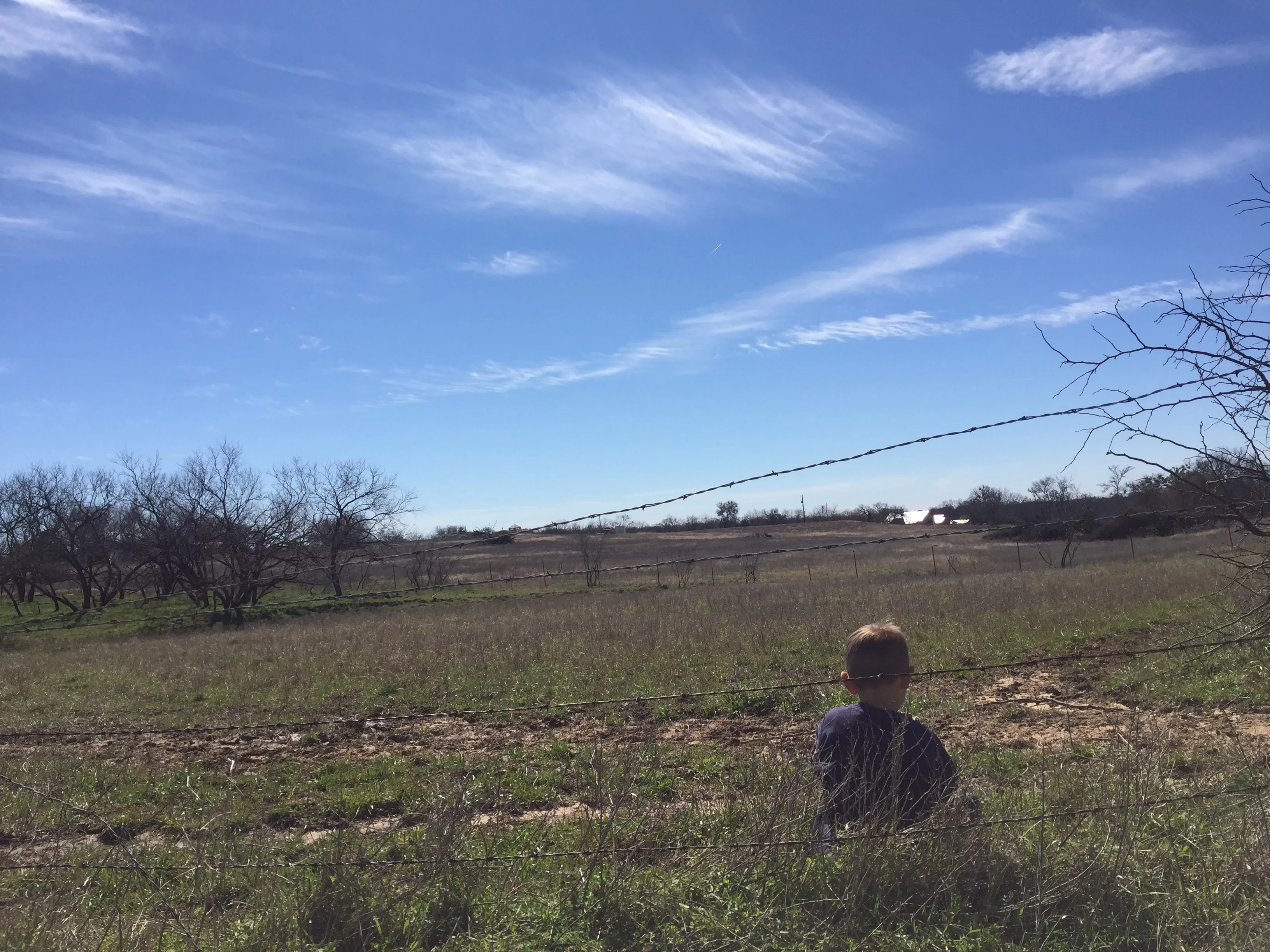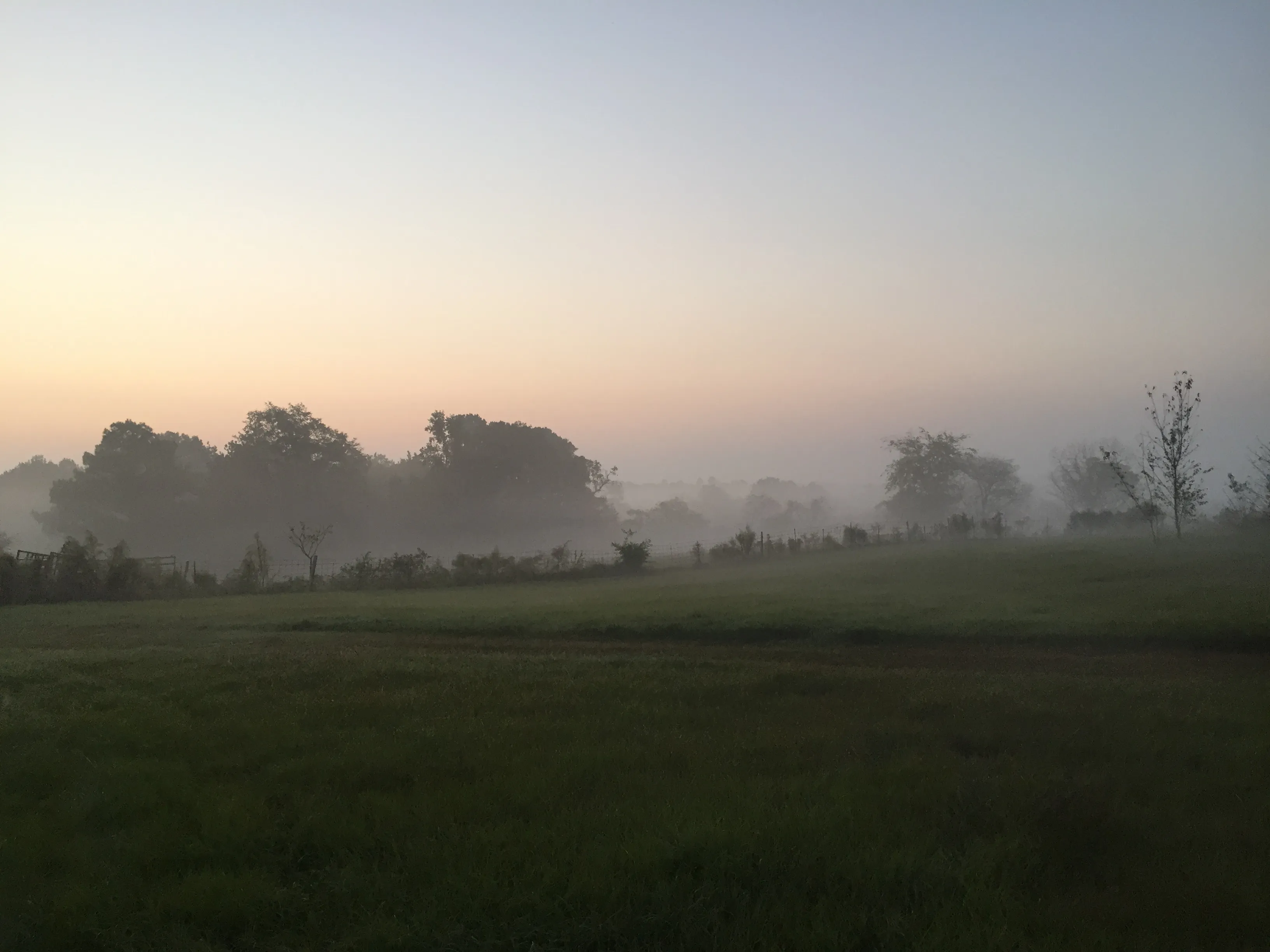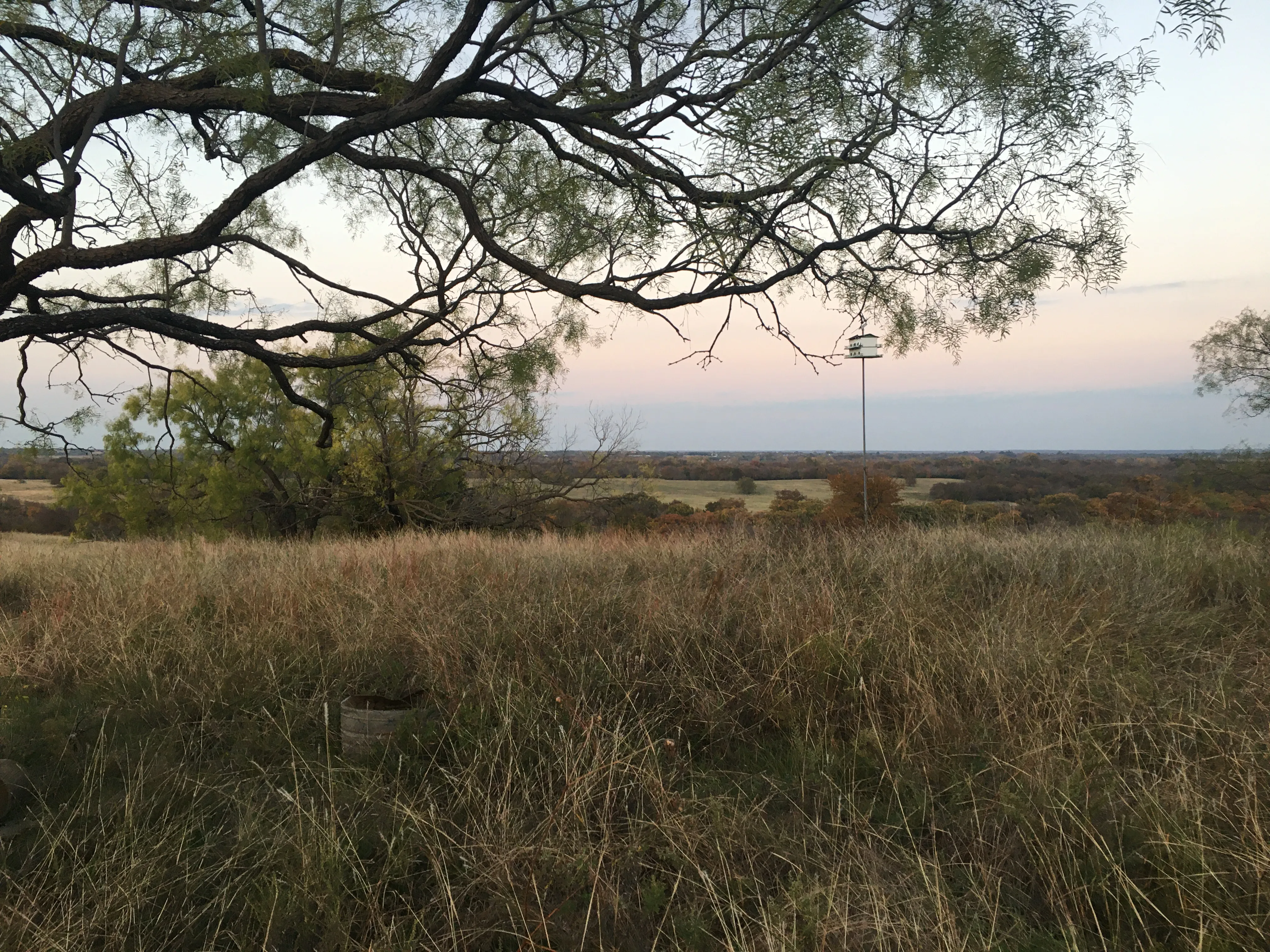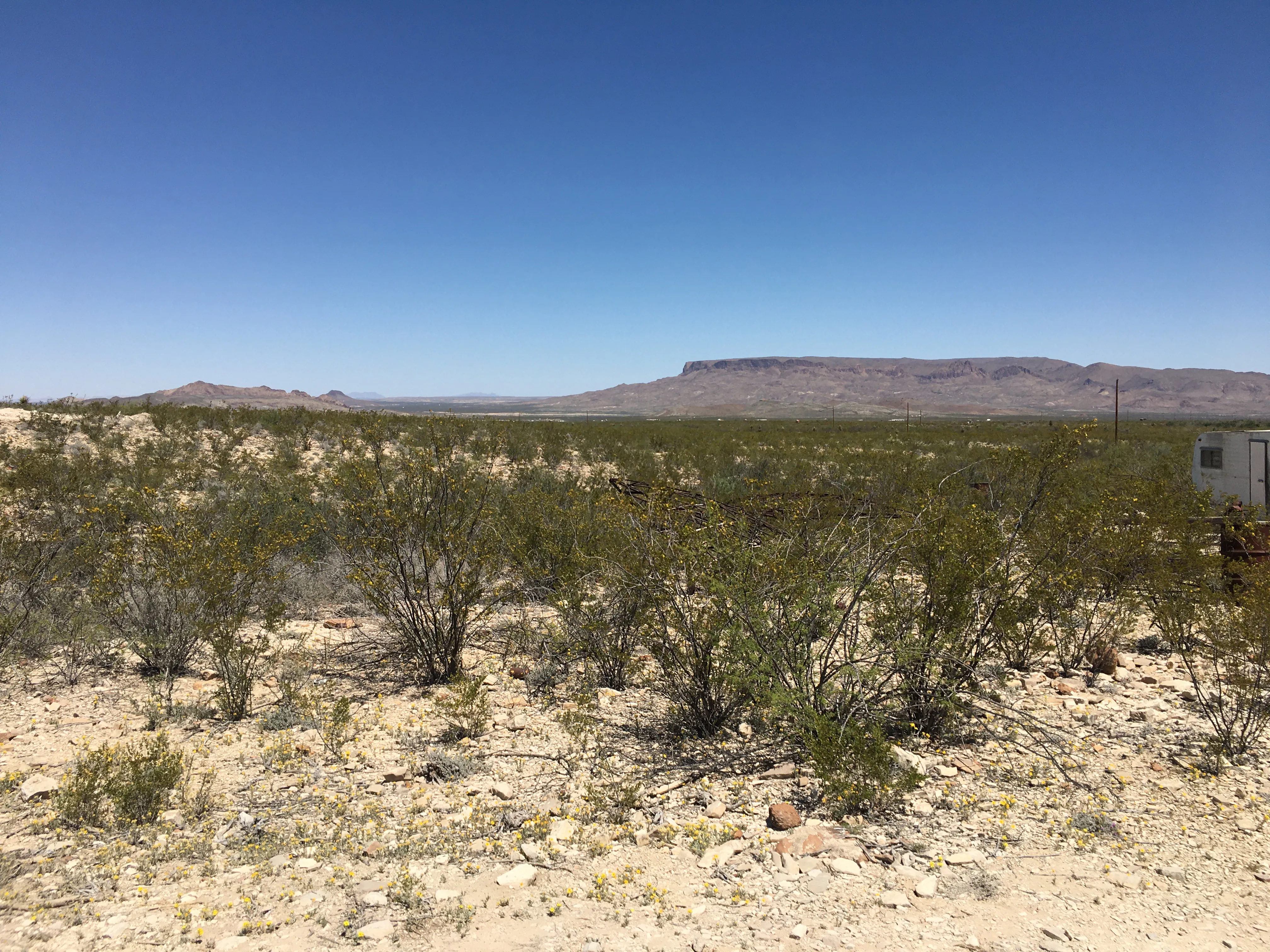3 Tips to Outsmart Texas Hot Weather (and Its Mood Swings)
 North Texas Farmland
North Texas Farmland
Recently, a potential client asked me how earth block performs in Texas hot weather, where the forecast usually reads hot, hotter, or hottest.
It’s true that Texas weather can be a real mix, with long, scorching summers, sudden cold fronts, and plenty of humidity in some areas. One reason I love designing with compressed earth blocks (CEBs) is their natural ability to help even out these ups and downs.
Earth block homes offer some key benefits:
- Thermal stability: Earth block walls act like a thermal battery, absorbing and releasing heat gradually. When paired with good shading and insulation, they help interiors stay steady through daily and seasonal temperature changes.
- Humidity buffering: Unstabilized and lime-stabilized earth blocks have a natural ability to buffer humidity on their own, absorbing excess moisture and releasing it when the air dries out. When blocks are cement-stabilized, that effect is reduced, but lime or clay plasters applied on top can still provide excellent humidity regulation. Together, these finishes help keep interiors more comfortable and healthier in damp conditions.
Still, mass alone isn’t enough. In Texas hot weather, the same thermal properties that can bring comfort in the right conditions can also work against you if they aren’t paired with smart design choices. Lasting comfort depends on insulation, shading, and ventilation that work with the climate instead of letting the walls absorb heat at the wrong time of year.
Here are three of my go-to ways to make an earth block home feel good in every season.
1. Add Exterior Insulation So the Walls Work for You
Earth block walls can soak up heat during the day, which is great in winter when you want to store that warmth. In Texas hot weather, though, you don’t want the walls holding onto heat from outside.
That’s where exterior insulation comes in. Adding a layer of breathable insulation, like rockwool or hemp-lime (hempcrete), blocks unwanted heat in summer and helps hold warmth in winter. Because these materials are vapor-permeable, they also work well with natural finishes on CEB walls.
2. Be Smart About Windows and Shade
 East Texas Fog
East Texas FogWindows can work for you or against you depending on how they’re placed and shaded. The goal is to let in the warming winter sun while blocking the hot summer sun, especially from spring equinox to fall equinox when the sun’s path is higher and more intense.
- South-facing windows are excellent for capturing the low winter sun, but they need roof overhangs or awnings sized to block the sun during the hotter months.
- West-facing windows take the strongest late-day sun, so it’s important to provide shade with porch roofs, pergolas, or west-facing trees. This way, you can still enjoy beautiful sunset views while keeping your interiors cooler.
- East-facing windows bring in bright morning light and can contribute to early-day heat gain. Shading with trees or lighter roof overhangs can soften that effect while still letting you enjoy natural morning light.
By being thoughtful about placement and shading, your windows can bring in the light you want while helping protect your home from excess heat. Check out my favorite Passive Solar strategies for more ideas and inspiration.
3. Plan for Ventilation That Fits the Season
 Honey Mesquite Tree
Honey Mesquite TreeBringing in fresh air can make a big difference in how your home feels and how much you rely on heating or cooling. Earth block homes already help buffer temperature swings, but ventilation keeps the air fresh and balanced.
- Natural ventilation: On pleasant days, opening windows and doors lets outdoor air flow in and push stale indoor air out. This helps cool the home and makes the interior feel healthier and more comfortable.
- Mechanical ventilation: When it’s too hot, too humid, or too cold outside, systems like whole-house fans, energy recovery ventilators (ERVs), or heat recovery ventilators (HRVs) bring in outside air and exhaust indoor air while also managing temperature and humidity.
For a deeper look at how ventilation ties into heating and cooling thermal mass, visit my page on energy efficient heating and cooling for earth block homes.
Thriving with Earth Block Homes in Texas Hot Weather
 West Texas Mesa
West Texas MesaEarth block homes already have a head start when it comes to comfort. With the right mix of insulation, shading, and ventilation, you can make the most of their natural thermal mass. These tips work whether you’re in the Texas Hill Country, the dry desert climate of West Texas, the wide grasslands of the Panhandle, the seasonal extremes of North Texas, the piney woods of East Texas, or the hot, humid Gulf Coast.
To recap, here are three strategies that make the difference in Texas hot weather:
- Add exterior insulation so the walls work for you instead of against you.
- Be strategic with window placement and shading from equinox to equinox.
- Plan for ventilation that adapts to each season.
If you’re dreaming of a comfortable, beautiful earth block home designed for Texas hot weather, I’d love to help make it happen. You can see more of my work or get in touch.
Did You Know?
- Hemp-lime (hempcrete) just made history. It now has its very own appendix in the 2024 International Residential Code (IRC), which means it’s no longer just a “fringe” material. Builders and designers can get it approved much more easily.
- Austin is already ahead of the curve! The city has officially adopted the hemp-lime appendix, so projects using this breathable, eco-friendly insulation are already clearing the path in Texas.
It’s not often that natural materials get code recognition this quickly, but hemp-lime is here to stay, and that opens the door for exciting new possibilities in design